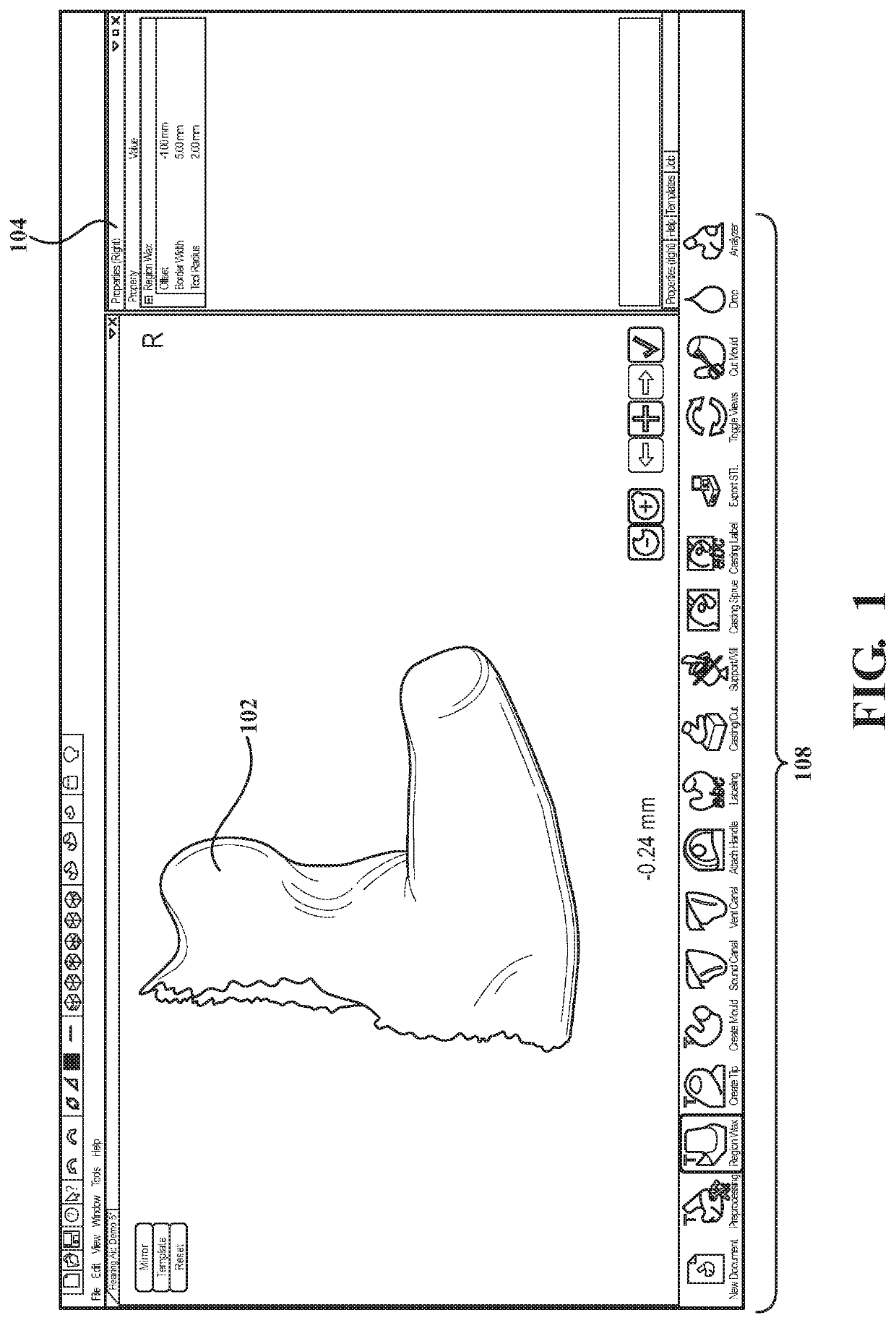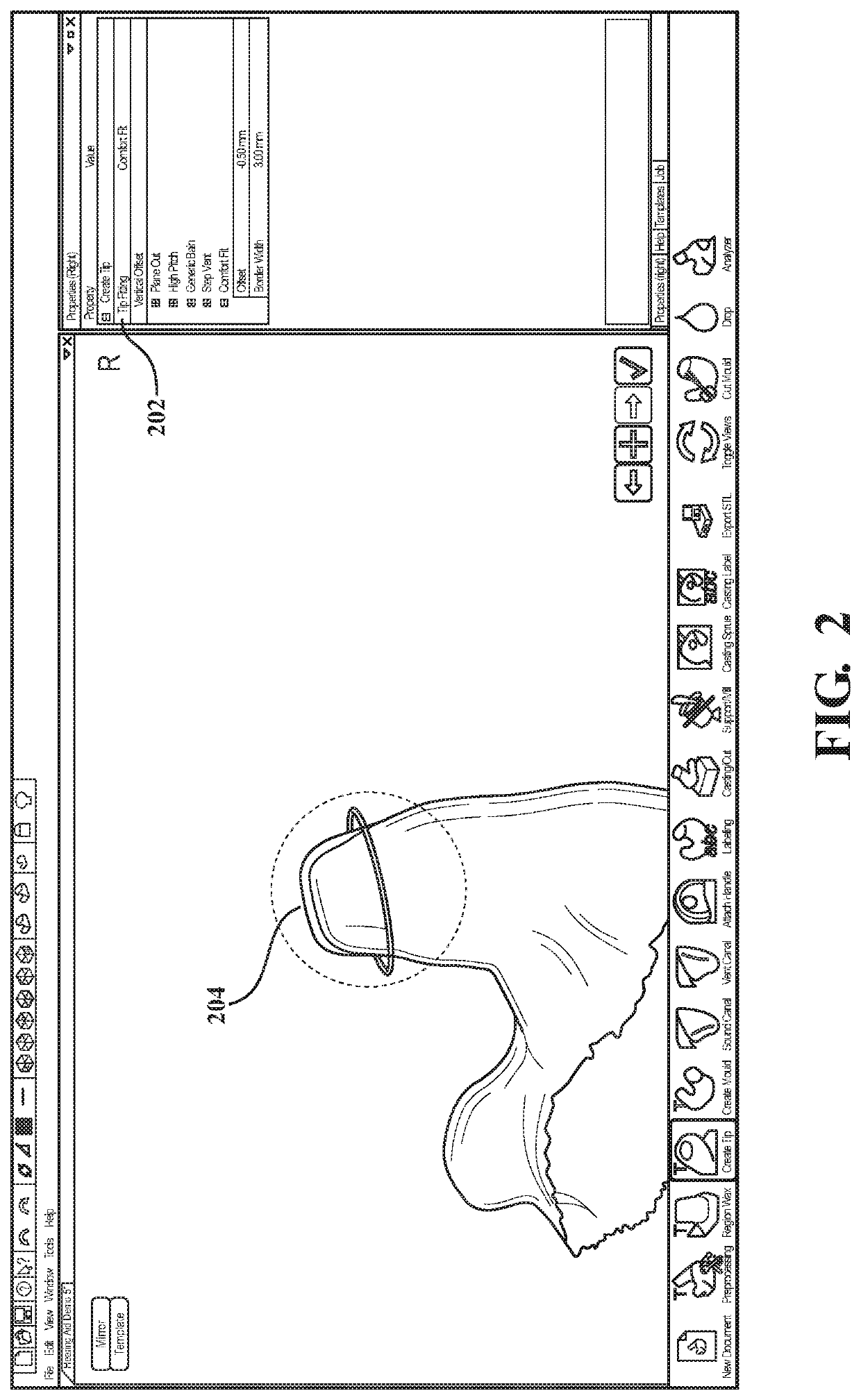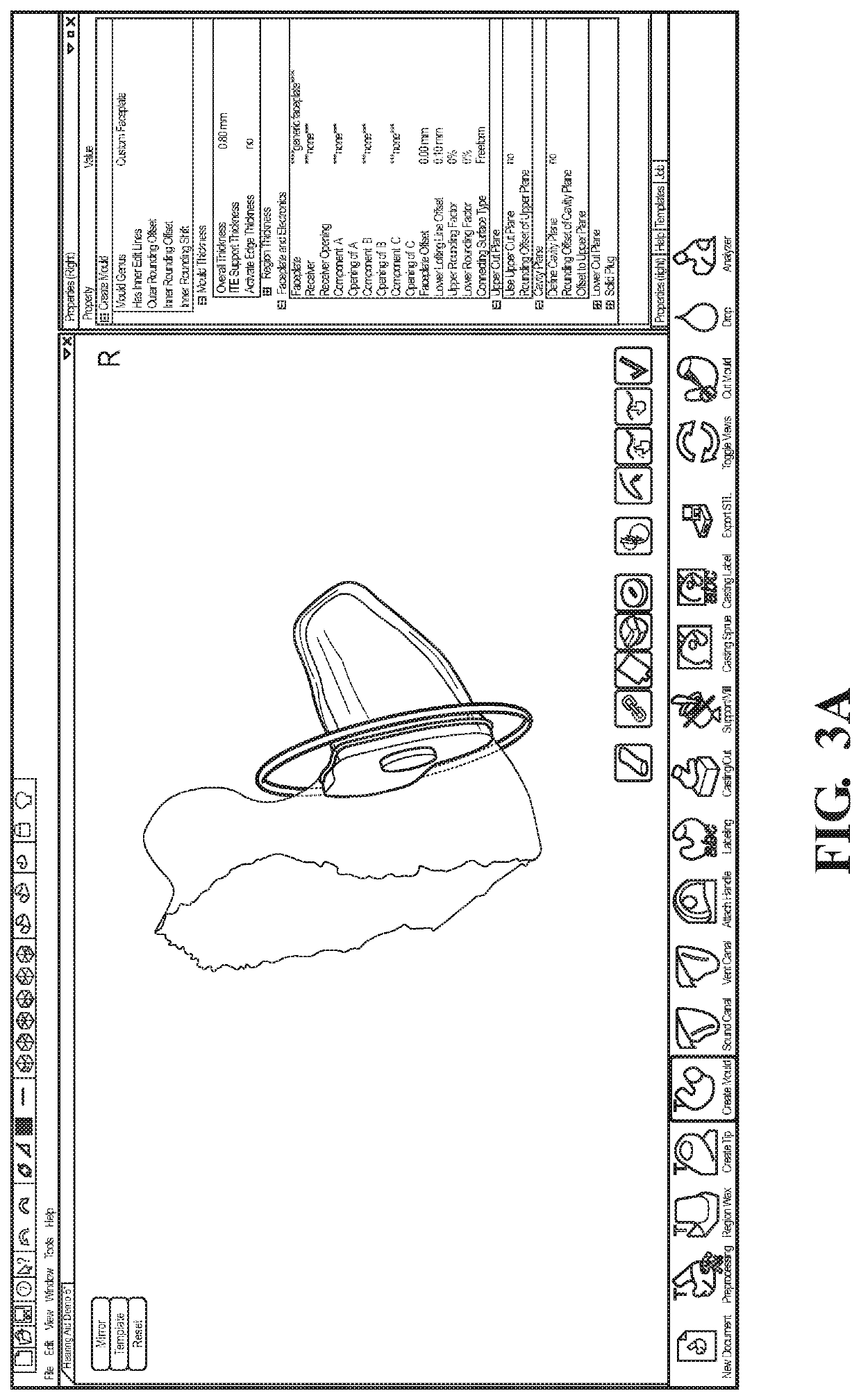System and method of machine learning-based design and manufacture of ear-dwelling devices
a technology of machine learning and design, applied in the direction of design optimisation/simulation, geometric cad, instruments, etc., can solve the problems of time-consuming and inability to avoid human errors, and achieve the effect of reducing the dimension of the three-dimensional scan
- Summary
- Abstract
- Description
- Claims
- Application Information
AI Technical Summary
Benefits of technology
Problems solved by technology
Method used
Image
Examples
Embodiment Construction
[0022]In an aspect, the design and manufacture of cavity-dwelling devices, such as ear-dwelling devices, may be machine learning-based. Characteristics of ear-dwelling devices, such as for example, hearing aids, may be determined and / or optimized using machine learning. It is to be understood that while descriptions herein may relate to hearing aids, the methods and systems described herein are not limited to hearing aids and may be applied to various cavity-dwelling devices that may be placed in the ear, mouth, and the like.
[0023]In some embodiments, the design of a hearing aid may be customized to each person. A hearing aid may be formed and adapted to a person's unique physiology, such as ear canal shape. A hearing aid may be automatically or at least partially automatically adapted to a person's ear canal shape by forming, shaping, and / or configuring the hearing aid based on at least in part on a scan of a person's ear. In some embodiments, a hearing aid may be formed to fit the...
PUM
 Login to View More
Login to View More Abstract
Description
Claims
Application Information
 Login to View More
Login to View More - R&D
- Intellectual Property
- Life Sciences
- Materials
- Tech Scout
- Unparalleled Data Quality
- Higher Quality Content
- 60% Fewer Hallucinations
Browse by: Latest US Patents, China's latest patents, Technical Efficacy Thesaurus, Application Domain, Technology Topic, Popular Technical Reports.
© 2025 PatSnap. All rights reserved.Legal|Privacy policy|Modern Slavery Act Transparency Statement|Sitemap|About US| Contact US: help@patsnap.com



